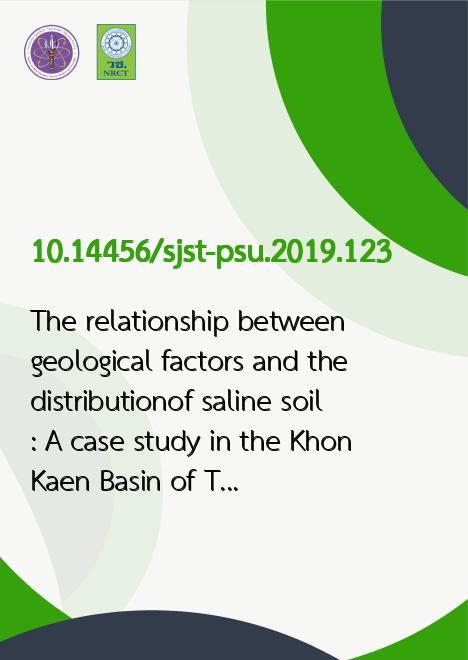
|
The relationship between geological factors and the distributionof saline soil: A case study in the Khon Kaen Basin of Thailand |
|---|---|
| รหัสดีโอไอ | |
| Creator | 1. Rungroj Arjwech 2. Mark E Everett 3. Patcharasu Wanakao |
| Title | The relationship between geological factors and the distributionof saline soil: A case study in the Khon Kaen Basin of Thailand |
| Publisher | Research and Development Office, Prince of Songkla University |
| Publication Year | 2562 |
| Journal Title | Songklanakarin Journal of Science and Technology |
| Journal Vol. | 41 |
| Journal No. | 5 |
| Page no. | 974-983 |
| Keyword | electrical resistivity tomography, soil salinity distribution, saline groundwater, geological structure, rock salt |
| URL Website | http://rdo.psu.ac.th/sjstweb/index.php |
| ISSN | 0125-3395 |
| Abstract | Soil and groundwater salinity poses a serious problem in Khon Kaen Province of Thailand and causes major reductionsto crop productivity. In this study, aerial photo interpretation, field studies, and borehole lithology log data were analyzed toexplore the spatial relationship between geological structure and the distribution of salinity. The results show that geologicalstructures play an important role in determining the salinity distribution. Slight and moderate salinity are generally found oversyncline structures and rock formation boundaries, whereas severe salinity is generally found over anticline structures and arounddepressions containing rock salt. All three categories of salinity (slight, moderate, and severe) are encountered along fracturesassociated with braided streams and faults associated with meandering streams. The electrical resistivity tomography resultsshowed that the depth of saline groundwater was between 5 and 30 m and its distribution was related to geomorphology. Salinitydistributions are natural occurrences controlled by subsurface geological structures and geomorphology |
